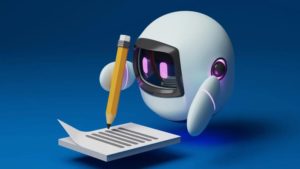Table of Contents
In recent years, generative AI has become popular across industries, and many businesses are using this technology to enhance the products and services they offer. One of the more well-known generative AI technologies is ChatGPT, which uses algorithms to produce content based on preexisting data parameters. Let’s talk about a few of the businesses that are utilising ChatGPT and the benefits they have reaped from it.
Use Cases for Generative AI Applications
Content production is undergoing a revolution thanks to generative AI technology, which produces realistic and fresh animated, textual, and visual content quickly.
Generative artificial intelligence (AI) has the potential to revolutionise a wide number of industries, including podcasting, gaming, healthcare, marketing, advertising, education, and surveillance. Consequently, one of the year’s most significant technological developments is generative AI. Let’s take a look at the miraculous applications of generative AI.
1. Content Generation
Generative Artificial Intelligence (AI) is a technology that imitates human-written content through the use of algorithms. As companies and people look for ways to automate content creation and save time and money, this kind of AI is growing in popularity.

To teach machine learning models the patterns and conventions of human language, a significant quantity of preexisting text—such as books, articles, and social media posts—is used in the creation of content using generative AI. These models can produce new text that, once trained, is stylistically and tonally identical to the original data.
2. Image Generation and Editing
With the use of generative AI, it is now possible to create realistic visuals from text that are based on particular settings, subjects, styles, or locales. This makes it possible for users to produce visual content for a variety of industries, including media, design, advertising, digital marketing, education, and more, fast and simply. An image generator, for example, can let a graphic designer create whatever kind of image they want. A realistic rendition of the image can be generated by the generator by supplying a semantic image or drawing.
Creating an image means altering its form, colour, and other outward elements while keeping its essential components intact. High-resolution versions can be created using Super-Resolution GANs, which depend on GAN (Generative Adversarial Network) technology. This is particularly useful when creating high-quality copies of medical or archive materials that would be too expensive to store in high-resolution format. Surveillance is a further use case.
3. Computerised Report Composing
Reporting on research sometimes involves challenging and time-consuming tasks, especially in the scientific and technical domains. ChatGPT expedites this process by skillfully organising reports, summarising findings, and formatting citations. Researchers can improve productivity and efficiency by narrowing their attention to the key elements of their work.
4. Translation and Localization of Languages

Language can be a significant barrier in this era of global cooperation. The key to overcoming these limitations is generative AI’s multilingual capabilities. With a focus on document and research paper translation, ChatGPT facilitates cross-linguistic knowledge transfer and international cooperation.
5. Idea Expansion and Brainstorming
ChatGPT proves to be an incredibly useful tool for brainstorming sessions, offering new ideas, methods, and potential research directions. Dynamically interacting with the model immerses researchers in an intriguing environment that fosters their creativity and idea development, hence enhancing their research pursuits.
6. Automated Prototyping and Coding
When it comes to prototyping and coding, computer science and engineering academics can benefit greatly from the application of generative AI. ChatGPT’s capacity to offer code snippets, troubleshoot problems and assist with software development expedites the implementation phase of research projects, streamlining an oftentimes laborious process.
7. Generation of Music

Do you want to work as a successful music producer? If yes, you might want to think about utilising generative AI to assist you in writing original songs for a variety of artistic endeavours. The ability of generative AI to create meaningful music intended for use in commercials and other creative projects is one of its main advantages.
8. Trading
The development and testing of trading strategies is one of the most intriguing applications of ChatGPT, for traders. You know that digital trading is on the rise these days and people have been making huge profits. Even beginners are taking advantage of auto trading bots like Bitcoin 360 AI. Therefore, ChatGPT has proven to be beneficial in trading as well by providing a lucrative strategy that outperforms buy and hold on TSLA over the previous four years by roughly 300% with only a few easy suggestions. That is outstanding, in our opinion!
9. Voice Generator
GANs, or Generative Adversarial Networks, can generate realistic-sounding audio speech. As trainers, discriminators emphasise, tone, and/or modulate the speech to produce a convincing result to do.
There are a lot of business uses for text-to-speech (TTS) generation, such as marketing, podcasting, advertising, and teaching. For example, teachers can turn their lecture notes into audio recordings to increase student engagement. In a similar vein, this method can also be useful for producing instructional materials for visually impaired people. In addition to saving businesses money on costly voice actors and equipment, TTS offers a large variety of language and vocal choices.
10. Making and Editing Videos
The potential of Artificial Intelligence (AI) to produce videos, from tiny clips to full-length films, is truly amazing. It accomplishes this by creating the visual components through image generation, the storyline or storyboard through text generation, and the soundtrack through music production.
AI is capable of taking in a wide range of input data, including blogs, music, photographs, and articles, which it may then imaginatively combine and modify to produce something wholly unique. It resembles a futuristic robot director with exceptional skills. Let’s say you have fantasised about seeing a video of a huge robot fighting a monstrous octopus in brutal combat to the tune of death metal. Then generative AI could be the answer.
11. Virtual Assistants and Chatbots
Artificial intelligence-generated programs, such as chatbots and virtual assistants, are made to converse with people and offer them help or information. Virtual assistants may do a greater range of duties, such as making appointments and playing music, whereas chatbots are usually employed for customer care or assistance.

These apps employ machine learning algorithms to produce a response or complete a job after using natural language processing (NLP) to comprehend and interpret user input. Certain chatbots and virtual assistants are rule-based, which means they can only reply to particular kinds of queries or requests and adhere to a preset set of rules. Others employ deep learning algorithms to learn new things constantly and get better at responding over time.
12. Art and Design
You may wonder, what precisely is AI-generated art? Creating original and one-of-a-kind artwork is among the many exciting applications of generative AI.
Though both fall under the category of generative AI, it’s crucial to understand that AI-generated art and image generation are not the same. While AI-generated art attempts to create something completely fresh and creative without any human interaction, picture generation is all about creating new visuals.
13. Game Creation
The term “generative application” in game development refers to the process of creating different aspects of video game content using artificial intelligence (AI) technology. This can involve creating complete game narratives as well as game levels, characters, and objects.
Gamers can have more interesting and pleasurable gaming experiences when original and diverse game material is produced using generative AI approaches.
Non-playable characters (NPCs) with distinct personalities and behaviours can also be made using AI, giving them a more authentic feel than just scripted characters. AI can also be utilised to create in-game objects, such as weapons or other collectables, which provide players with a feeling of advancement and exploration.
Takeaway
These real-world generative AI applications can completely transform a range of sectors, including healthcare and entertainment. In the upcoming years, we should anticipate seeing even more cutting-edge applications arise due to the growing strength and sophistication of generative AI techniques.
Author Profile

- Guest Blogger & Outreach Expert - Interested in Writing Blogs, Articles in Business Niche | News Journalist By Profession in the United Kingdom
Latest entries
 BusinessNovember 21, 2025A Practical Guide to Using LMS Platforms for Better Onboarding
BusinessNovember 21, 2025A Practical Guide to Using LMS Platforms for Better Onboarding EducationNovember 17, 2025Choosing the Right AI Course for Your Child: A Parent’s Guide
EducationNovember 17, 2025Choosing the Right AI Course for Your Child: A Parent’s Guide FinanceSeptember 19, 20257 Paid Advertising Mistakes That Drain Your Marketing Budget
FinanceSeptember 19, 20257 Paid Advertising Mistakes That Drain Your Marketing Budget BusinessAugust 22, 2025How Recycled Polythene Helps Businesses Exceed Sustainability Targets?
BusinessAugust 22, 2025How Recycled Polythene Helps Businesses Exceed Sustainability Targets?




